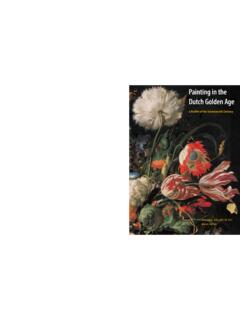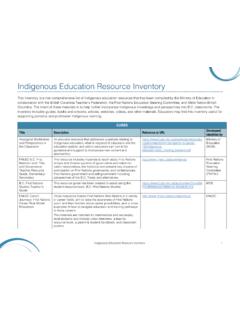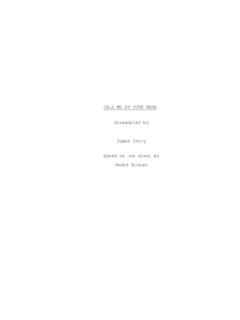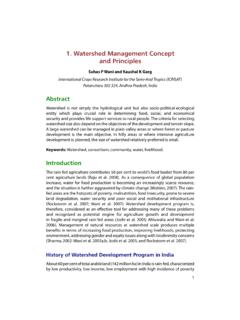Transcription of 2021 Missing and Murdered Indigenous Women, Girls, and ...
1 2021 Missing and Murdered Indigenous Women, Girls, and 2 SLGBTQQIA+ People National Action Plan:Ending Violence Against Indigenous Women, Girls, and 2 SLGBTQQIA+ PeopleJune 3, 2021 Note to Reader The National Action Plan honours, and is inclusive of, all Indigenous women, girls, and Two Spirit, Lesbian, Gay, Bisexual, Transgender, Queer, Questioning, Intersex, and Asexual Plus (2 SLGBTQQIA+) people. We are unique and distinct in our identities, ancestries, histories, and traditions and we acknowledge the importance of recognizing these differences. The Final Report of the National Inquiry into Missing and Murdered Indigenous Women and Girls (MMIWG) relied on shared understandings of specific terms and definitions related to Missing and Murdered Indigenous women, girls and 2 SLGBTQQIA+ people.
2 These terms and their definitions are also used in the National Action Plan, both for consistency and to respect the collective efforts by all parties involved in the National Final Report stated that In the context of the National Inquiry, the term Indigenous can be understood as a collective noun for First Nations, Inuit, and M tis people in the report, we use the term Indigenous to identify experiences that may be held in common by First Nations, M tis and (MMIWG Final Report, p. 59).First NationsFirst Nations are part of unique larger linguistic and cultural groups that vary across the country.
3 First Nations have a unique and special relationship with the Crown and the people of Canada as set out in the Royal Proclamation of 1763 and Manifested in Treaties, the Constitution Acts of 1867 and 1982, Canadian common law and International law in accordance with the United Nations Declaration of the Rights of Indigenous live in every province and territory in Canada and are an international Indigenous circumpolar people. Most Inuit in Canada live in Inuit Nunangat the land, water, and ice that make up the Inuit homeland. This homeland is made up of four regions: Inuvialuit, in the western Arctic; the territory of Nunavut; Nunavik, in northern Quebec; and Nunatsiavut, in northern tis NationThe M tis Nation emerged as a distinct Indigenous people in the historic Northwest during the late 18th century.
4 The historic M tis Nation Motherland encompasses the Prairie Provinces of Manitoba, Saskatchewan and Alberta and extends into contiguous parts of Ontario, British Columbia, the Northwest Territories and the northern United States. In 1870 the M tis Provisional Government of Louis Riel negotiated the entry of the Red river Settlement into Confederation as the Province of 3 The M tis Nation defines M tis as a person who self-identifies as M tis, is distinct from other Aboriginal peoples, is of historic M tis Nation Ancestry and who is accepted by the M tis Nation.
5 3 People of the M tis Nation are represented by democratically elected governing members in each of the five Final Report notes the very challenging task of engaging in a legal inquiry process, while incorporating distinctive First Nations, Inuit, and M tis cultures, languages, spirituality, and creating opportunities for healing. (MMIWG Final Report, p. 3). It also acknowledges the challenges facing specific groups, institutions, geographical, or other circumstances, within a distinctions-based approach. (MMIWG Final Report, p. 83). In addition, the Final Report recognizes that there are distinctive bases of discrimination, depending on which Indigenous Nation or group s experience is in play.
6 In other words, Inuit, M tis, and First Nations women do not always face the same kind of discrimination or threat, even though all are Indigenous . (MMIWG Final Report, p. 104).Urban RealitiesIdentity is complex and Urban Indigenous communities honour, respect and celebrate this complexity. One may identify as First Nations, Inuit or M tis, but some may feel that they do not fit into these categories and may more readily identify with the term Indigenous , which is inclusive of complex identities. However, we also recognize that some are not comfortable being identified as Indigenous .
7 Therefore, we use and understand the terms Indigenous and First Nations, Inuit and M tis to always mean regardless of residency, regardless of relationship to the Crown, and inclusive of the full complexity of our identities. The Urban Sub Working Group defines urban as: First Nation, Inuit and M tis people living in small, medium and large communities, including rural, isolated and remote communities, which are: off-reserve; outside of their home community, community of origin or settlement; or outside of Inuit Nunangat (Inuit Homelands).Off Reserve Status and Non-status Indigenous Peoples Off reserve status and non-status Indigenous peoples are amongst the most socially and economically disadvantaged groups in Canadian society, an unfortunate reality deeply rooted in colonialism and its impacts.
8 As the Final Report noted during the National Inquiry, it was a struggle to provide culturally safe wellness services to all those affected by the issue of Missing and Murdered Indigenous women, girls, and 2 SLGBTQQIA people, whether they be Status First Nations, non-Status First Nations, Inuit or M tis (MMIWG Final Report, p. 70). 4 The Congress of Aboriginal Peoples (CAP) represents off-reserve status and non-status Indians, M tis and Southern Inuit Indigenous Peoples. As identified in the Final Report, the development and implementation of a National Action Plan to address violence against Indigenous women, girls, and 2 SLGBTQQIA+ people is a partnership that calls for programs and services that must be no-barrier and must apply regardless of Status or location (MMIWG Final Report, p.)
9 176) Indigenous Women, Girls, and 2 SLGBTQQIA+ PeopleThe Final Report notes that We have chosen to use the phrase Indigenous women, girls, and 2 SLGBTQQIA people, both to include non-binary people and people with diverse sexualities, and as an explicit reminder that gender-diverse people s needs must equally be taken into account. (MMIWG Final Report, p. 59).2 SLGBTQQIA+ People The + at the end of 2 SLGBTQQIA+ is a way of being inclusive, honouring and celebrating how our languages are expanding and offering choices for our sexual and gender diverse relatives to relying on and employing the above-noted terms and their definitions.
10 The National Action Plan honours, and is inclusive of, all Indigenous Peoples affected by this ongoing tragedy, including but not limited to First Nations, Inuit, and M tis women, girls, and 2 SLGBTQQIA+ people. 5 ContentsDedication 7 Message from the National Family and Survivors Circle 9 Message from the Core Working Group 11 Introduction 12 National Inquiry into Missing and Murdered Indigenous Women and Girls 13 Developing a Core Working Group 17 National Action Plan 21 Overarching Vision and Guiding Principles 22 Vision 22 Guiding Principles 22 Goals 25 National Action Plan Common Short-Term Priorities 26 National Family and Survivors Circle 31 First Nations 35 Inuit 38M tis Nation 402 SLGBTQQIA+ 44 Urban 47 Congress of Aboriginal Peoples 50 Federal



